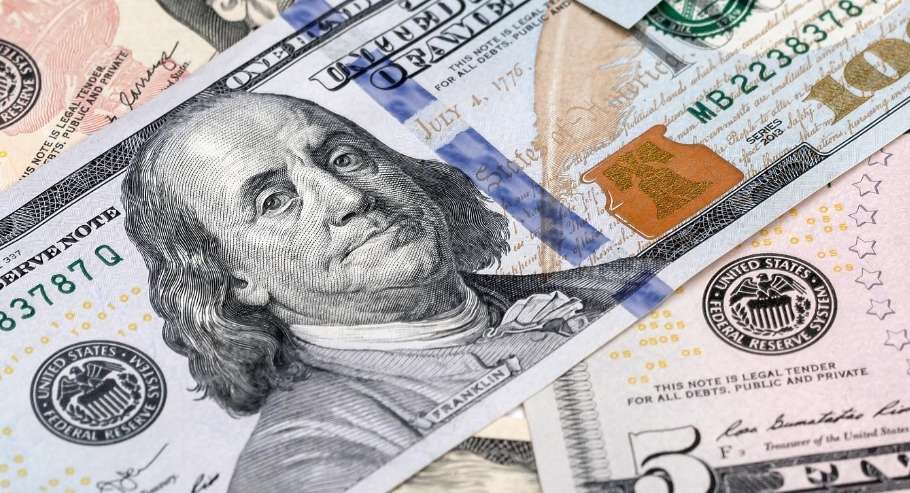US Treasury Yield Surge Raises Currency Concerns
Advertisements
In recent times, the economic landscape in the United States has experienced a stunning shockwave, particularly with the release of the latest non-farm payroll data. This critical economic indicator, which many analysts eagerly awaited, surpassed expectations by a significant margin. Forecasts had anticipated a creation of 160,000 jobs; however, the actual figure ballooned to an astonishing 256,000. This unexpected strength in employment has dampened hopes for a much-anticipated interest rate cut, leading many in the financial world to speculate that we might instead be on the brink of a new phase of interest rate hikes. The cautious optimism that had characterized market sentiment now seems to give way to a more uncertain outlook, as bond and stock markets react to these evolving economic signals.
One of the most direct implications of these labor statistics is reflected in the bond market, where the yield on the ten-year U.S. Treasuries has surged to approximately 4.76%. This marks an increase of 100 basis points compared to the same time last year. The rising yields on U.S. government securities serve as a critical benchmark for global financial markets, leading to a cascade of reactions across various sectors. In the foreign exchange markets, we observe a striking 10% increase in the U.S. dollar index over the past quarter, which underscores the strengthening of the dollar against other currencies amid this tumultuous backdrop. As the dollar stands as a predominant reserve currency worldwide, its substantial appreciation imposes significant depreciation pressures on the currencies of other nations.
In the context of the ongoing economic contest between the United States and China—two of the largest economies with the most pronounced interest rate differentials—the situation has resulted in a rather pronounced outcome, with one side seemingly dominating the other in the face of this economic volatility, as a new currency storm quietly brews.
Consider the financing landscape in China. For loans under 700,000 Yuan, interest rates hover at an annualized rate of 10.2% (referenced from BM plus 4%), but intriguingly, amounts over 35 million Yuan could benefit from a discount, bringing the rate down to 8.2%. Such disparities in interest rates not only signify the complexities of regional financial practices but also reveal a broader global trend where capital costs fluctuate widely based on local market conditions. For instance, when examining the yen financing rates from a brokerage, one discovers that borrowing up to 11 million yen (approximately 500,000 Yuan) has an interest rate of only 1.5%, with opportunities for lower rates reaching as low as 0.75%.

The striking aspect of this scenario is that despite the seemingly comparable bond rates in both countries, the financing costs for loans overseas can vary by a factor of ten. A closer look at domestic loan rates offers more context. In China, the Loan Prime Rate (LPR) stands at 3.1%, while Japan’s rate is slightly lower at 1.9%. What do these numbers imply? They suggest that while the loan conditions in Japan appear consistent with market expectations, the offshore yuan rates offered by foreign brokers significantly overshadow domestic rates, which tends to result in a substantial increase in borrowing costs for Chinese investors.
This paradox—where offshore interest rates for Yuan significantly exceed onshore rates—is a phenomenon worth scrutiny. The offshore yuan has to contend with high volatility and speculative pressures, prompting the need for higher interest rates as a stabilization mechanism. By contrast, onshore Yuan rates aim to stimulate local economic activity, translating to lower borrowing costs. The disparity now presents a dilemma: with an offshore Yuan yielding an attractive 10%, while onshore rates languish at a mere 3%, holders of assets in onshore currency face potential losses amid the growing allure of offshore investments.
The explanation behind these discrepancies can be distilled into a few key points. First, the offshore Yuan operates within a framework of free convertibility. In response to depreciation risks, market forces may push offshore interest rates higher to maintain exchange rate stability. Second, within a fully market-driven context, interest rates ultimately serve as compensation for currency depreciation risks. For instance, high Russian Ruble rates often correlate with expectations of currency depreciation.
However, difficulties arise when individuals find themselves unable to translate their holdings in onshore currency into offshore Yuan to exploit the differential in interest rates. Daily travel to foreign markets or banks to convert funds is not a feasible option. What, then, should investors do as they grapple with this dilemma of unexploited interest opportunities and exposure to depreciation risks? The straightforward answer may lie in converting or exchanging domestic currency for stronger foreign currencies where interest rates are compelling. For instance, transitioning to currencies like the Japanese yen, which exhibits less strain in terms of interest rate differentials or even the US dollar, which promises more attractive yields.
Overall, this situation embodies a deeper systemic issue in global finance, interweaving the dynamics of currency valuation and interest rates within different economic territories. It reveals an environment rich with arbitrage opportunities between offshore and onshore currencies, highlighting that cash holdings in domestic Yuan exhibit a premium in the offshore market. Furthermore, the reality of the diverging interest rates illustrates the necessity of closely monitoring offshore financing rates. A marked uptick in these rates signals increasing pressure on currency stability that could have far-reaching implications.
In conclusion, those who are privy to these insights understand the imperative for strategic asset allocation on a global scale. The focus thus remains on navigating these tumultuous waters while striving to achieve holistic investment strategies that foster resilience across varying economic cycles. As we traverse this complex landscape, maintaining an adaptable and proactive approach becomes paramount in ensuring effective preservation of wealth and leveraging potential growth opportunities.
Post Comment